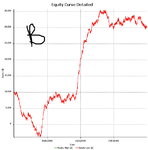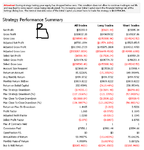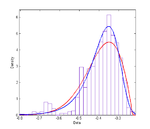And B - Equity Curve and details.
Note B loses more than enough money to begin with, which leads me to believe that the Gap grades were a large component of the PnL.
Both examples are with same commissions and slippage, no compounding.
Now clearly what works for A doesn't work for B, but:
*Included in the backtest are somewhat arbitrary variables (that is, I chose them from experience having traded these "manually" and haven't changed them). If I change these variables for B, how do I avoid curve fitting them?
*A and B are different asset classes, there is no reason to expect what works on one will work on another
*changing the slippage to something more likely improves the performance dramatically
Thoughts?
Note B loses more than enough money to begin with, which leads me to believe that the Gap grades were a large component of the PnL.
Both examples are with same commissions and slippage, no compounding.
Now clearly what works for A doesn't work for B, but:
*Included in the backtest are somewhat arbitrary variables (that is, I chose them from experience having traded these "manually" and haven't changed them). If I change these variables for B, how do I avoid curve fitting them?
*A and B are different asset classes, there is no reason to expect what works on one will work on another
*changing the slippage to something more likely improves the performance dramatically
Thoughts?



